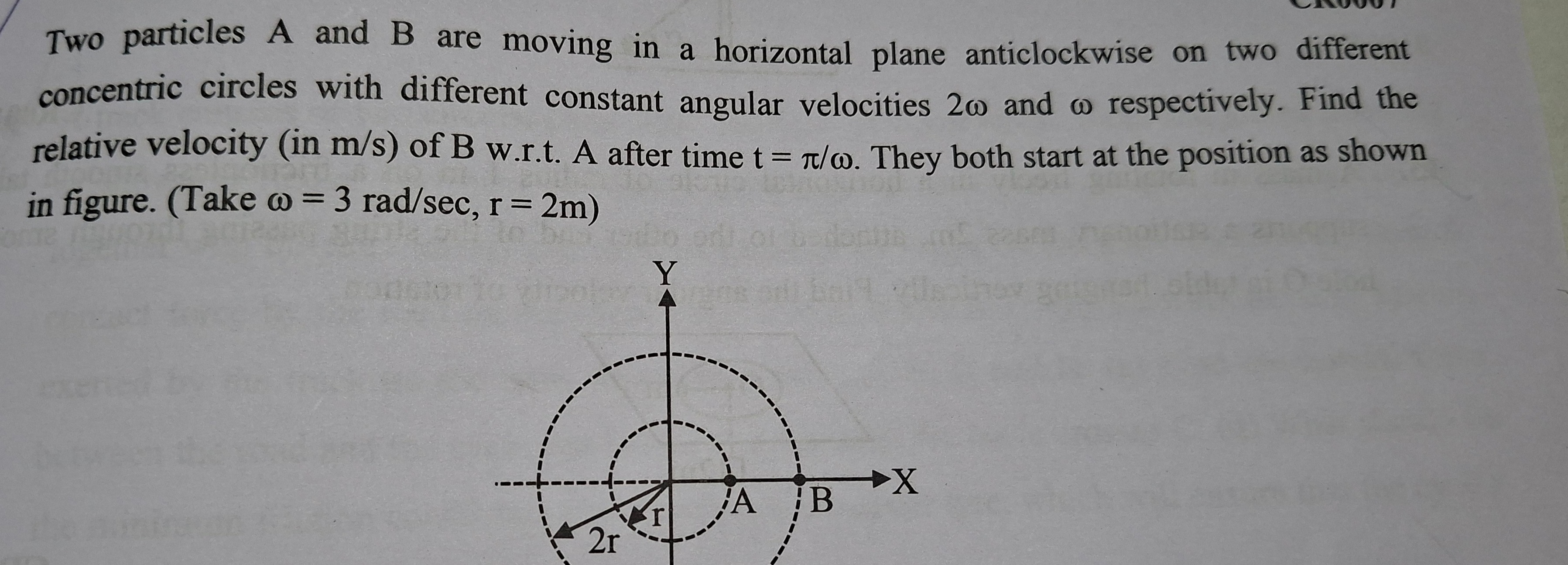Question
Question: Two particles A and B are moving in a horizontal plane anticlockwise on two different concentric cir...
Two particles A and B are moving in a horizontal plane anticlockwise on two different concentric circles with different constant angular velocities 2ω and ω respectively. Find the relative velocity (in m/s) of B w.r.t. A after time t=π/ω. They both start at the position as shown in figure. (Take ω = 3 rad/sec, r = 2m)

24 m/s
12 m/s
36 m/s
0 m/s
24 m/s
Solution
-
Initial Conditions:
- Particle A: Radius RA=r, initial position on positive x-axis.
- Particle B: Radius RB=2r, initial position on positive x-axis.
- Angular velocities: ωA=2ω (anticlockwise), ωB=ω (anticlockwise).
- Time t=π/ω.
- Given values: ω=3 rad/sec, r=2 m.
-
Angular Positions at time t=π/ω:
- For particle A: θA(t)=θA(0)+ωAt=0+(2ω)(π/ω)=2π.
- For particle B: θB(t)=θB(0)+ωBt=0+(ω)(π/ω)=π.
-
Velocities at time t=π/ω: The velocity vector for a particle in anticlockwise circular motion starting from the positive x-axis is given by v=Rω(−sinθi^+cosθj^).
- For particle A:
- θA=2π
- vA=RAωA(−sin(2π)i^+cos(2π)j^)=r(2ω)(0i^+1j^)=2rωj^.
- For particle B:
- θB=π
- vB=RBωB(−sin(π)i^+cos(π)j^)=(2r)(ω)(0i^−1j^)=−2rωj^.
- For particle A:
-
Relative Velocity of B with respect to A: vB/A=vB−vA vB/A=(−2rωj^)−(2rωj^)=−4rωj^.
-
Magnitude of Relative Velocity: Substitute the given values: r=2 m, ω=3 rad/sec. ∣vB/A∣=∣−4×(2 m)×(3 rad/sec)j^∣=∣−24j^∣ m/s=24 m/s.
